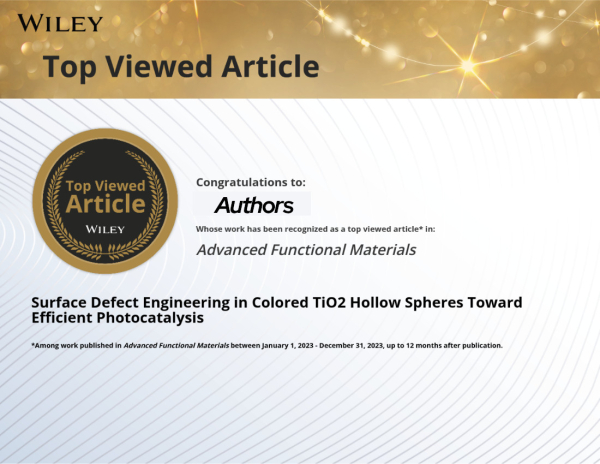Nanostructured titania (TiO₂) is widely used in photocatalytic applications, but its wide bandgap limits its effectiveness under sunlight. In this study, we propose a hydrogenation strategy to extend TiO₂ absorption into the near-infrared region, significantly enhancing its photocatalytic activity and opening new perspectives for environmental and energy applications.
Nanostructured TiO₂ is considered one of the most promising materials for photocatalytic applications, owing to its high specific surface area and excellent surface reactivity. However, its wide bandgap (approximately 3.2 eV) limits light absorption primarily to the ultraviolet region, thereby reducing its overall efficiency under solar illumination.
In this work, we present an innovative approach to overcome this limitation, based on the controlled hydrogenation of hollow TiO₂ nanostructured spheres. The obtained spheres, called Titania Hollow Spheres (THS), consist of hierarchically assembled nanoparticles and exhibit a significant broadening of the absorption spectrum, extending up to 1200 nm, well into the near-infrared region.
The structural and surface modifications induced by hydrogenation lead to a remarkable enhancement in charge photogeneration and separation, thereby boosting photocatalytic activity. Specifically, when applying the hydrogenated THS to the photodegradation of ciprofloxacin—a pharmaceutical emerging as an environmental concern—a degradation of 82% is observed after 6 hours of exposure to simulated solar light.
Valence band photoelectron spectroscopy analyses revealed the formation of oxygen vacancies, with their density increasing proportionally with the hydrogenation rate. These structural defects are closely linked to the enhanced photocatalytic activity, as confirmed by electron paramagnetic resonance (EPR) data, which show the presence of Ti³⁺ centers in the hydrogenated materials.
The obtained results not only provide new experimental evidence on the role of oxygen defects in photocatalysis, but also pave the way for the development of highly efficient titanium dioxide materials, aimed at a wide range of applications, including contaminated water remediation and sustainable solar fuel production.
